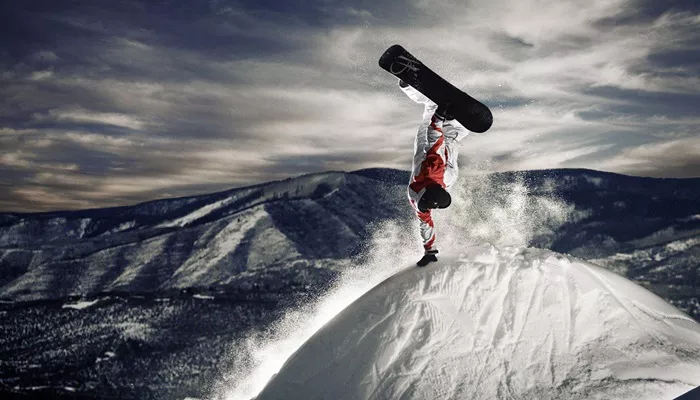Snowboarding is one of the most exhilarating winter sports, attracting adventure-seekers of all ages. For beginners, the thought of gliding down a snowy slope can be both exciting and intimidating. This article will explore the challenges beginners face, the factors that influence learning, and practical tips for a smooth introduction to snowboarding.
What Makes Snowboarding Appealing?
Snowboarding offers a unique combination of adrenaline and creativity. Unlike skiing, snowboarding has a more casual, freestyle vibe, appealing to those who enjoy both sports and self-expression. It allows riders to carve their paths, perform tricks, and experience the thrill of gliding over snow.
For many beginners, the appeal lies in the challenge. Snowboarding pushes your physical and mental limits, providing a sense of accomplishment once you start to master the basics. But just how hard is it to get started?
Understanding the Learning Curve
Snowboarding is challenging for beginners, but it’s not impossible. Most people face difficulties during the first few days, but improvement comes quickly with persistence and proper guidance.
Key Challenges for Beginners
Balance and Coordination
Unlike walking or running, snowboarding requires you to balance on a single board. Keeping steady while sliding down a slope can feel unnatural at first. Beginners often struggle with staying upright and controlling their movements.
Falls Are Inevitable
Falling is a natural part of learning. You’ll likely fall numerous times, especially when practicing how to turn or stop. The key is to fall safely and learn from each experience.
Getting Comfortable with Gear
Snowboard boots, bindings, and the board itself can feel bulky and unfamiliar. Learning to maneuver with these pieces of equipment takes time.
Mastering Basic Techniques
Techniques like edging, carving, and shifting weight can be challenging at first. These foundational skills are essential for progressing to more advanced maneuvers.
How to Make Snowboarding Easier for Beginners
With the right approach and mindset, snowboarding can become much more manageable.
1. Take Professional Lessons
Learning from a certified instructor is the best way to get started. They can teach you proper techniques, ensure safety, and help you avoid developing bad habits. Most ski resorts offer beginner-friendly lessons tailored to new snowboarders.
2. Start on Easy Slopes
Beginner slopes, often called “bunny hills,” are ideal for practicing. These slopes have a gentle incline, allowing you to focus on balance and control without the added challenge of high speeds.
3. Wear the Right Gear
Proper clothing and protective gear are crucial for comfort and safety.
Essentials include:
A well-fitted snowboard and boots.
A helmet to protect your head from falls.
Wrist guards to prevent injuries from forward falls.
Waterproof gloves and clothing to keep you warm and dry.
4. Practice Basic Moves
Before heading to the slopes, practice basic snowboarding moves on flat ground. Focus on strapping into your bindings, standing up from a seated position, and balancing on the board.
5. Be Patient and Persistent
Progress might feel slow at first, but persistence pays off. Celebrate small victories, like completing your first turn or descending the slope without falling.
The Physical Demands of Snowboarding
Snowboarding requires strength, endurance, and flexibility. Beginners should be prepared for a physical workout, as the sport engages multiple muscle groups.
Muscles Used in Snowboarding
Legs and Core: These muscles help maintain balance and control.
Arms: While not heavily involved in the actual boarding, they assist with pushing off and regaining balance.
Building Stamina
Snowboarding sessions can be tiring, especially for beginners. Simple exercises like squats, lunges, and planks can help build the strength and stamina needed for a day on the slopes.
Common Beginner Mistakes to Avoid
Learning snowboarding comes with trial and error, but avoiding these common mistakes can accelerate your progress:
1. Leaning Back Too Much
Many beginners lean back instinctively, fearing they’ll fall forward. However, this stance makes it harder to control the board. Aim to keep your weight centered or slightly forward.
2. Skipping Warm-Ups
Snowboarding requires flexibility and quick reactions. Skipping a proper warm-up increases the risk of muscle strains or injuries.
3. Overlooking Rest Breaks
Trying to snowboard for hours without breaks can lead to fatigue and frustration. Take short breaks to recharge and avoid injuries caused by exhaustion.
How Long Does It Take to Learn Snowboarding?
The time it takes to learn snowboarding varies from person to person.
Most beginners can grasp the basics—such as standing, balancing, and making small turns—within a day or two of lessons.
For more advanced techniques, like carving or linking turns, it may take a few weeks of consistent practice. Factors influencing your progress include:
Fitness Level: Stronger, more flexible individuals may find it easier to control the board.
Frequency of Practice: The more often you snowboard, the faster you’ll improve.
Quality of Instruction: Professional lessons accelerate learning.
Benefits of Snowboarding for Beginners
Despite its challenges, snowboarding offers numerous benefits that make the effort worthwhile:
Physical Fitness: It’s a full-body workout that improves strength, balance, and coordination.
Mental Resilience: Overcoming the challenges of snowboarding builds confidence and perseverance.
Social Interaction: Snowboarding is often a group activity, providing opportunities to meet new people and bond with friends or family.
Connection with Nature: Being outdoors on the slopes offers a refreshing escape from daily routines.
Conclution:
Yes, snowboarding can be challenging for beginners, but it’s far from impossible. With the right preparation, guidance, and determination, most people can overcome the initial difficulties and enjoy the sport. The key is to approach it with an open mind, embrace the learning process, and focus on having fun.
Snowboarding offers a rewarding mix of adventure, physical activity, and personal growth. Whether you’re looking for a new hobby or simply want to try something different this winter, snowboarding is a sport worth exploring. So, gear up, hit the slopes, and discover the thrill for yourself!
Related topics:
- How Long Does It Take to Learn How to Snowboard?
- The 6 Best Snowboarding Goggles
- What Is The Equipment for Snowboarding?

